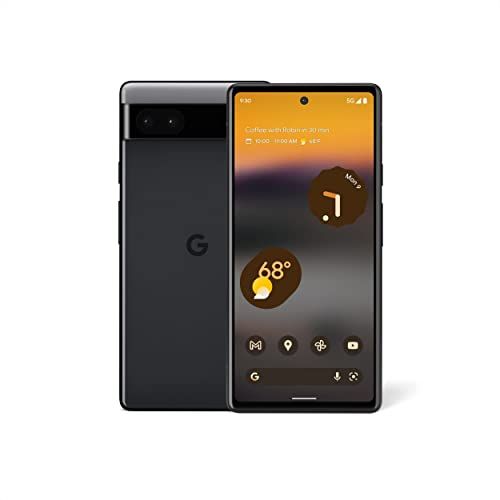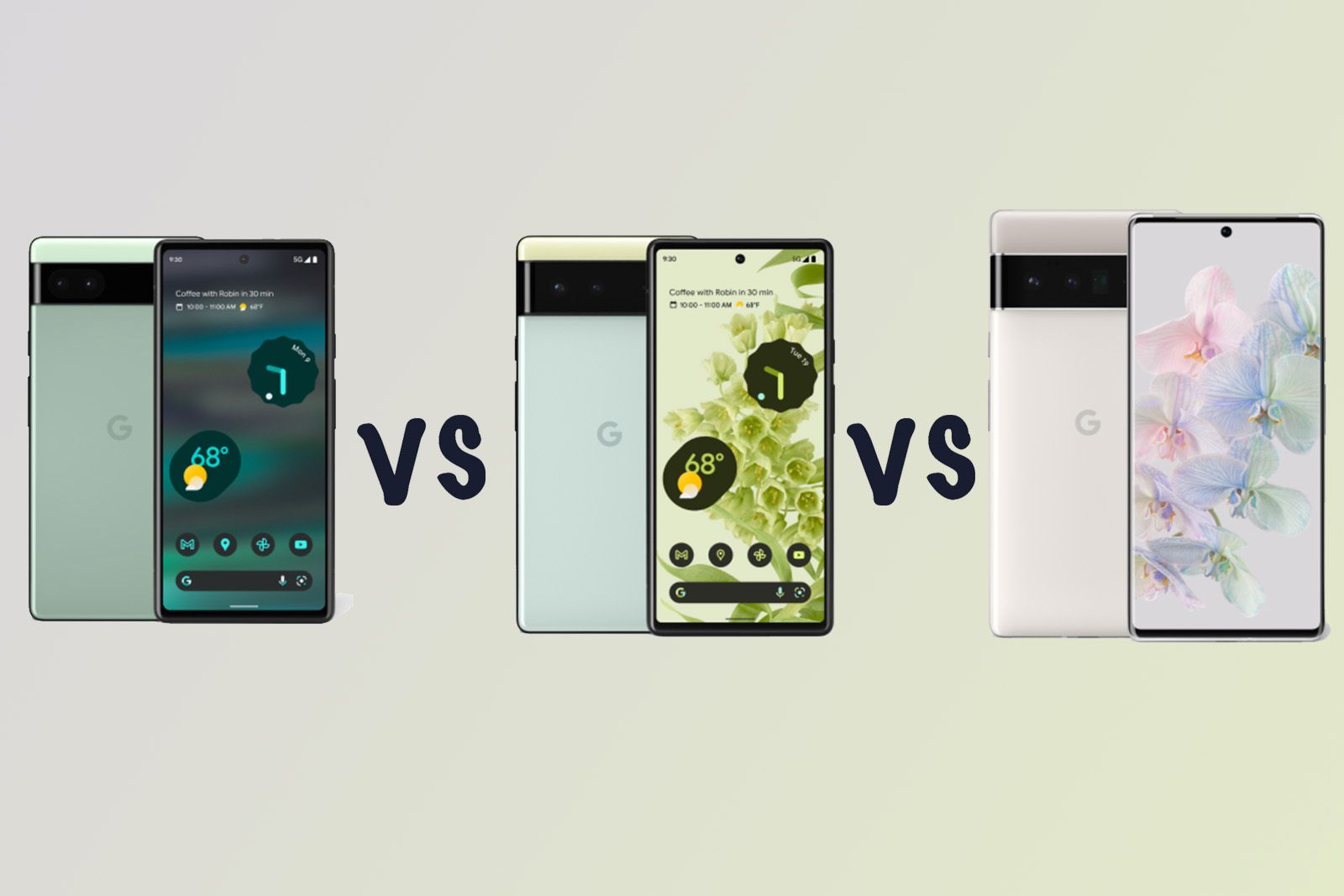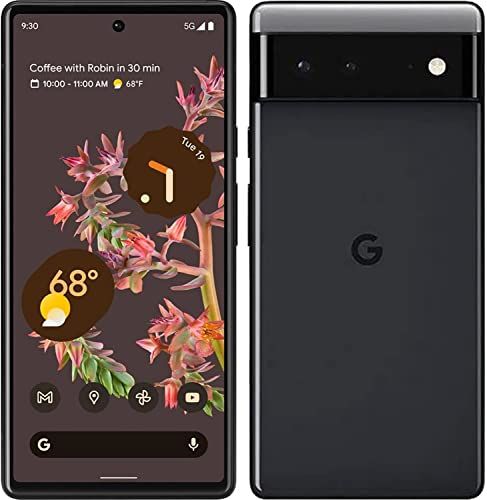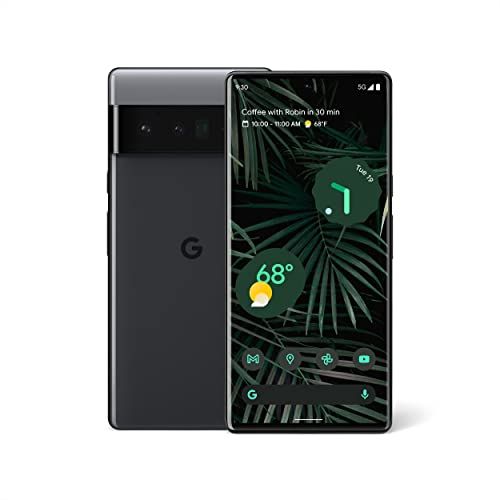Google announced the Pixel 6a during its I/O developer conference on 11 May, following in the footsteps of the Pixel 6 and 6 Pro that launched in October 2021.
Offering the same design language as the Pixel 6 and 6 Pro, as well as the same processor, what do you miss out on opting for the "a" device and how does it compare to the flagship models?
We've examined the differences between the Pixel 6a, Pixel 6 and Pixel 6 Pro to help you work out which is the right Pixel for you.

Google Pixel 6a
The Pixel 6a take much of the Pixel 6 experience and condensing it down to a more affordable package. It might have been replaced by the Pixel 7a now but it's still a fantastic option.
Price
- Pixel 6a: £399 / $449 / €459
- Pixel 6: £599 / $599 / €649
- Pixel 6 Pro: £849 / $899 / €899
There's a pretty big difference in price between these three models, with the Pixel 6a coming in at an affordable price. It is a smaller device and does make some compromises on what it offers, especially in the display and camera as we detail below.
The Pixel 6 is slightly more expensive, sitting in the middle of the Pixel 6a and the Pixel 6 Pro in terms of price and features. It too makes some compromises compared to the 6 Pro, but it offers more than the Pixel 6a.
The Pixel 6 Pro steps up in price, but offers a lot more. Comparing with other flagship smartphones from the likes of Samsung or Apple, it actually looks like it's competitively priced, as is the Pixel 6.
Design
- Pixel 6a: 152.2 x 71.8. x 8.9mm, 178g
- Pixel 6: 158.6 x 74.8 x 8.9mm, 207g
- Pixel 6 Pro: 163.9 x 75.9 x 8.9mm, 210g
- Pixel 6a: Black, White, Green
- Pixel 6: Stormy Black, Sorta Seafoam, Kinda Coral (limited edition)
- Pixel 6 Pro: Stormy Black, Cloudy White, Sorta Sunny (limited edition)
The Google Pixel 6a, Pixel 6 and 6 Pro all share a similar design, though there are some variations between the three models, as you would expect.
All have a prominent horizontal camera housing that spans the entire width of the rear, but the Pixel 6a and Pixel 6 have a dual camera while the 6 Pro has a triple camera. The flash module sits on the right of the lenses within the housing on all three models.
The design on all three sees a central alloy core which wraps around the edges and frames the camera bar. This is polished on the 6 Pro and matte on the Pixel 6, so the Pro looks a little more premium. For the Pixel 6a, the rear is composite, while for the Pixel 6 and 6 Pro it is finished in glass, with the Pixel 6 getting Gorilla Glass 6, and the Pixel 6 Pro Gorilla Glass Victus, so the Pro should offer better scratch resistance. All three come in a range of colours.
All three also sport an under-display fingerprint sensor, along with a centralised punch hole camera at the top of the display, but the Pixel 6a and Pixel 6 have a flat screen, while the 6 Pro has a slight curve to its display.
The Pixel 6a is IP67 water and dust resistant, while the Pixel 6 and 6 Pro are IP68 water and dust resistant. In terms of size, the Pixel 6 Pro is the largest of the three devices and the heaviest, with the Pixel 6a the smallest and the Pixel 6 sitting in between.
Display
- Pixel 6a: 6.1-inch, Full HD, OLED, 60Hz
- Pixel 6: 6.4-inch, Full HD+, OLED, 90Hz
- Pixel 6 Pro: 6.7-inch, Quad HD+, LTPO OLED, 120Hz
The Google Pixel 6a has a 6.1-inch OLED display which is slightly smaller than the Pixel 6's screen, which is a 6.4-inch OLED display.
Both devices have a flat display and they both offer a Full HD+ resolution at 2400 x 1080 pixels, which delivers a pixel density of 411ppi on the Pixel 6 and 429ppi on the Pixel 6a. The big difference is that the Pixel 6 has a 90Hz refresh rate compared to the Pixel 6a's 60Hz refresh rate. That means that the 6a won't offer scrolling that's as smooth as the other Pixel 6 models.
The Pixel 6 Pro meanwhile, comes with a 6.7-inch curved LTPO OLED display, which makes it a little bigger than the Pixel 6, and quite a lot bigger than the Pixel 6a. It's also more distinctive than both thanks to the curved display.
The Pixel 6 Pro has a Quad HD+ resolution at 3120 x 1440 pixels, offering a pixel density of 512ppi, and there is a variable refresh rate between 10Hz and 120Hz.
All three models offer HDR support and they also both come with a high brightness mode, always-on display, Now Playing and At A Glance features so you don't miss out on any features whatever model you opt for.
The last thing worth mentioning is the Pixel 6 and 6 Pro both have Gorilla Glass Victus protection, while the Pixel 6a is Gorilla Glass 3, which will mean the flagship models will be more resistant to scratches.
Hardware and specs
- Pixel 6a: Google Tensor, 6GB RAM, 12GB storage, 4400mAh
- Pixel 6: Google Tensor chip, 8GB RAM, 128/256GB storage, 4614mAh
- Pixel 6 Pro: Google Tensor chip, 12GB RAM, 128/256GB storage, 5003mAh
The Google Pixel 6a, Pixel 6 and 6 Pro all feature the company's own system-on-chip, called Tensor, along with the Titan M2 security coprocessor. The Tensor chip has been designed with security in mind, and all the artificial intelligence and machine learning applications run on it - from computational photography to real-time translation.
The Pixel 6a has 6GB of RAM and 128GB of storage and that's it - just one option. The Pixel 6 comes with 8GB RAM and 128GB or 256GB storage options, while the Pixel 6 Pro has 12GB RAM and storage options of 128GB or 256GB.
In terms of battery, the Pixel 6a has a 4400mAh battery, which is slightly smaller than the Pixel 6's 4614mAh battery. The Pixel 6 Pro has a slightly larger 5003mAh battery than both but remember it has a larger screen to power.
The Pixel 6a offers up to 72 hours on Extreme Battery Saver mode, while the Pixel 6 and 6 Pro are half this at 48 hours. The Pixel 6 and 6 Pro have Fast Charge though, which promises 50 per cent charge in 30 minutes, though the charger is sold separately.
The Pixel 6 and 6 Pro also both support wireless charging and Battery Share, which is more commonly known as reverse wireless charging. The Pixel 6a offers neither.
Cameras
- Pixel 6a: Dual camera (12.2MP + 12MP), 8MP front
- Pixel 6: Dual camera (50MP + 12MP), 8MP front
- Pixel 6 Pro: Triple camera (50MP + 48MP + 12MP), 11.1MP front
The camera department is where you'll experience the bigger difference between all three of these devices.
The Google Pixel 6a has a 12.2-megapixel main camera with f/1.7 aperture and 1.4µm pixels, and a 12-megapixel ultrawide camera with f/2.2 aperture and 1.25µm pixels. The main camera has a 77-degree field of view and the ultrawide sensor has a 114-degree field of view.
By comparison, the Google Pixel 6 comes with a dual camera with a 50-megapixel main camera, with an aperture of f/1.85 and 1.2µm pixels, and a 12-megapixel ultrawide with an aperture of f/2.2 and 1.25µm pixels. The main camera has a 82-degree field of view, while the ultrawide has a 114-degree FOV.
The Pixel 6 Pro comes with a triple rear camera, which offers the same 50-megapixel main sensor and 12-megapixel ultrawide as the Pixel 6, but it adds a 48-megapixel telephoto sensor to the mix. This third sensor offers 4x optical zoom and 20x digital zoom, and it features 0.8µm pixels and an aperture of f/3.5.
There's a big difference here in telephoto. The Pixel 6 offers up to 7x Super Res Zoom (which is digital) from the main camera, but the Pro offers 4x optical and then up to 20x Super Res Zoom, meaning the Pro is much more versatile in offering those long-range shots.
Both the Pixel 6 and Pixel 6 Pro have laser detect autofocus, and optical and electrical image stabilisation, while the Pixel 6a has standard autofocus with dual-pixel phase detection, though it too has OIS and EIS.
In terms of features, all three offer many of the same features - Magic Eraser, Real Tone, Face Unblur, Night Sight, Cinematic Pan and Portrait mode, to name a few. In fact, the only feature the Pixel 6a doesn't offer that the Pixel 6 and 6 Pro do is Motion Blur.
In terms of the front cameras, the Pixel 6a and 6 have an 8-megapixel sensor with an f/2.0 aperture and 1.12µm pixels with an 84-degree field of view. The Pixel 6 Pro has an 11.1-megapixel sensor with f/2.2 aperture, 1.22µm pixels, and a 94-degree field of view.
The Pixel 6a, Pixel 6 and Pixel 6 Pro all support 4K video recording from their rear cameras, though only the Pixel 6 Pro supports 4K video recording from the front camera. The Pixel 6a and 6 offer 1080p video recording from its front camera.
Conclusion
The Google Pixel 6a, Pixel 6 and Pixel 6 Pro offer very similar designs, though the Pro model offers a slightly more premium finish with a curved display, as well as a triple rear camera compared to the Pixel 6, while the Pixel 6 offers a more premium finish than the Pixel 6a.
As you step up in the Pixel 6 models, you step up in certain features, like screen size and refresh rate, camera capabilities, RAM and storage and battery capacities. You of course pay for those step-ups though and you might find you don't need some of them, or that you're happy to compromise on certain aspects to save cash.
For some, the Google Pixel 6 Pro will be worth every penny and it is an excellent device but so is the Pixel 6 and let's not forget that while the Pixel 6a makes a few compromises here and there, it is still offering the same design, same chipset and 5G for a very affordable price.



